February 7, 2004
Bill Seyfried gets ready to go into 'the ball' in Alvin this morning for his dive with Jeff Seewald. They will be deploying a high temperature chemical sensor at a >350°C hydrothermal vent for the next few weeks and taking water and sulfide samples.
The right photo shows the 'high-tech' 'communication' system used to send the clipboard with the check-off sheets up to the Chief Engineer in the 'Dog House' - where the Alvin A-frame is controlled during launch and recovery of the sub.
Another day, another dive. We're in a groove now, with Alvin diving daily and the TowCam 'Night Owls' flying the camera system across gnarly volcanic terrain on the crest and upper flanks of the East Pacific Rise. Javier, Rhian and Adam are the main 'flyers' with Dan being mostly a pain in the butt and a back seat driver...some things never change.
Rhian (left) and Javier (right) show their different TowCam flying 'styles'...
The scientists are immersed in their experiments - literally. The Univ. of Minnesota group, headed by Bill and Kang are working late into tonight to analyze their chemical data from their probes. They are comparing their numbers with Jeff Seewald's chemistry from the fluids he sampled today with his special gas-tight bottles. His titanium bottles are made such that they seal in the gases in the super hot hydrothermal fluids.
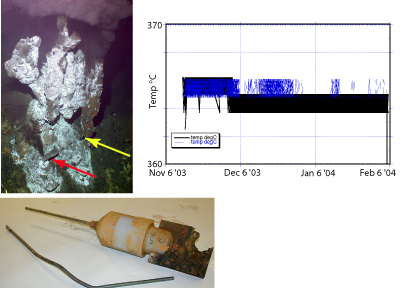
A composite image from P Vent, one of the hydrothermal vents being studied by numerous investigators, both on this cruise and other cruises that will visit the EPR later this year. The photo shows the chimney structure that is about 3-4 m tall as imaged in December 2003 (photo by Tim Shank and the Alvin Group). The red arrow points to one of the new Deep Sea Power & Light high temperature loggers that was deployed in the vent. The yellow arrow points to where the tip is embedded in the chimney. You can see that the vent has grown up about 1m above the point where the probe was placed 3 months ago by Prof. Karen Von Damm of the Univ. of New Hampshire. You can also see in the photo by the red arrow, the black smoke that is coming from the base of the chimney right next to the logger housing. We decided to recover this probe and redeploy another one in its place. The bottom photo shows the logger as it was recovered- notice the burn hold in the syntactic foam plate a the end of the logger. The upper right graph shows the temperature of the fluids which was very steady at 365°C for the past 3 months.
The biologists and microbiologists on board have also been busy scraping rocks for 'slime' and picking the smallest of animals off the rock surfaces. Below are some photos of some of these critters and the 'tracks' they leave.
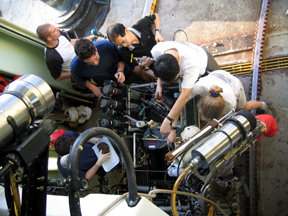
Scientists crowd around the Alvin basket this afternoon after Dive 3964. The water samples and rock samples are being analyzed this evening.
Jeff
Seewald is all smiles after a successful dive today. 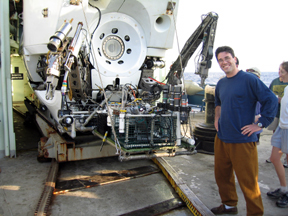
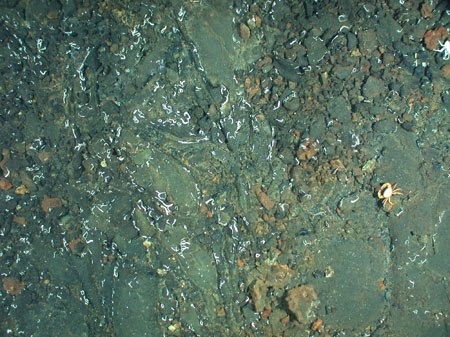
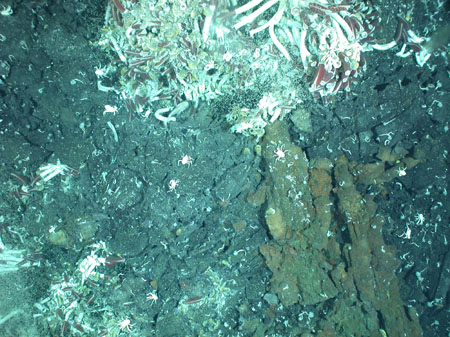
Examples of the downlooking digital photographs taken from Alvin using the DSPL cameras and strobes mounted on the back of the basket. These photos were taken at the Tica vent and show the hydrothermal rubble (left) around the base of the chimney and the tube worms and other vent animals (e.g. crabs, swarms of amphipods [white clouds], and mussels growing in the tube worm clumps - right photo).
The
biologists were busy after the dive today. They recovered
three of the basalt settlement panels that were deployed at Tica Vent
four days ago, and they got samples from another sulfide chimney, this
time from Bio9 Vent.
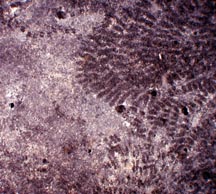
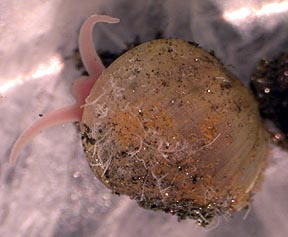
Left photo shows tiny 'crop circles' that are most likely
the tracks made by limpets
scraping the 'bio-scum' off the basalt panel surface. Right photo shows
one of the limpets that came off the basalt panel experiment deployed
by Stace on the first dive.
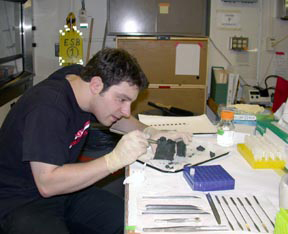 Grad student Antoine Page, from Portland State Univ., probes a sulfide
chimney sample for microbes that live in "boiling acid"-- the
fluids that bathe the inside of the hydrothermal chimney wall.
Grad student Antoine Page, from Portland State Univ., probes a sulfide
chimney sample for microbes that live in "boiling acid"-- the
fluids that bathe the inside of the hydrothermal chimney wall.
The geologists on board are in full swing planning the upcoming dives and analyzing data from their first dive yesterday, Dive 3963. Vicki Ferrini, from SUNY-Stony Brook has been 'awesome' in wading through computer code and processing the navigation data sets for the dives and the high resolution altimetric sonar data. The map below- showing a small survey of a lava channel ~ 1.5 km east of the EPR axis, is the fruit of her labors. We're thrilled to now be able to take the data from Alvin and make detailed navigation and bathymetry maps in real-time.
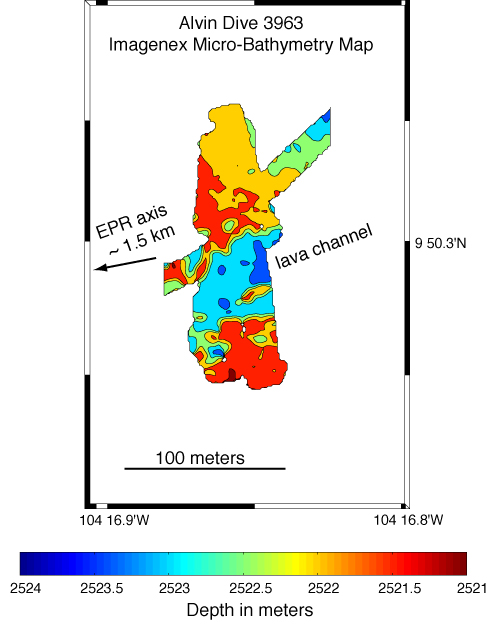
Look for more maps and geological interpretations in the next few days in the special "Map Data" section of the web site.
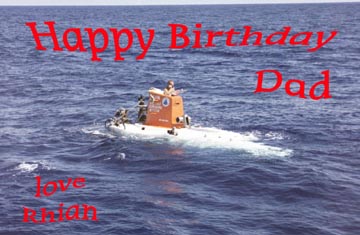
Rhian sends her Dad, David, her love and Birthday Wishes!